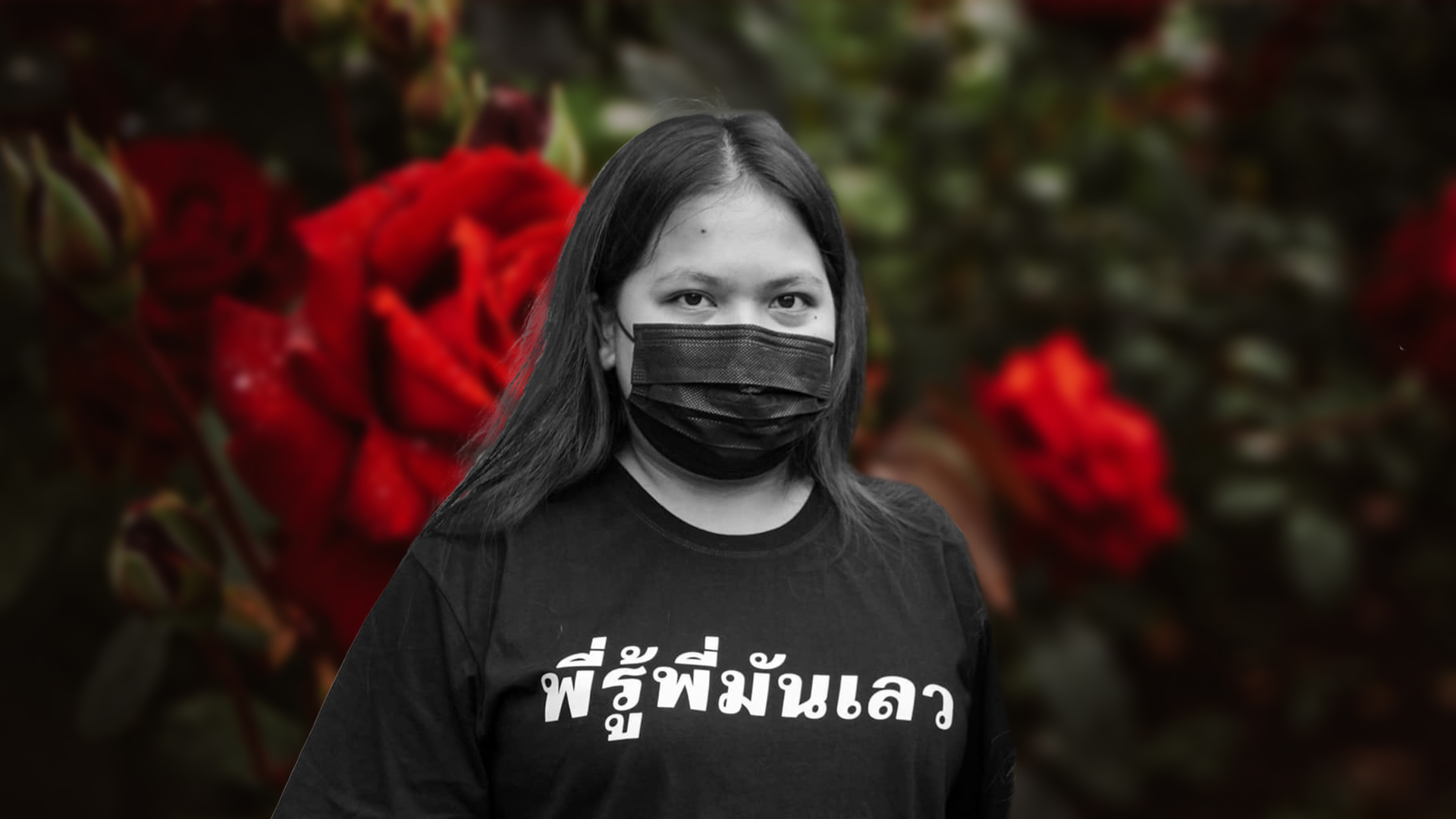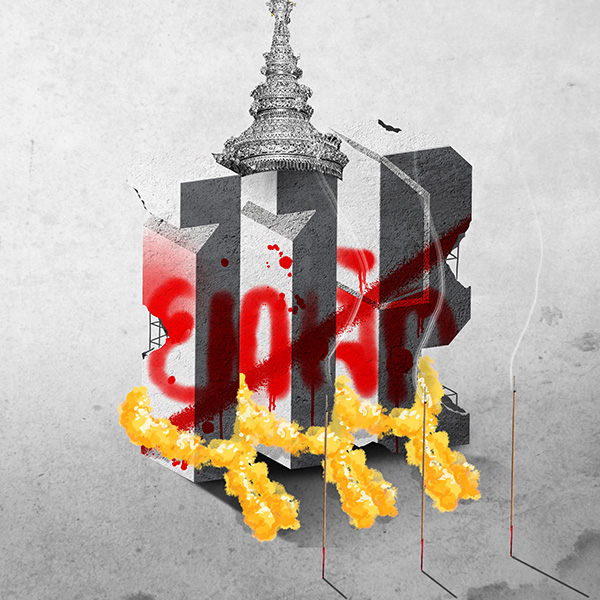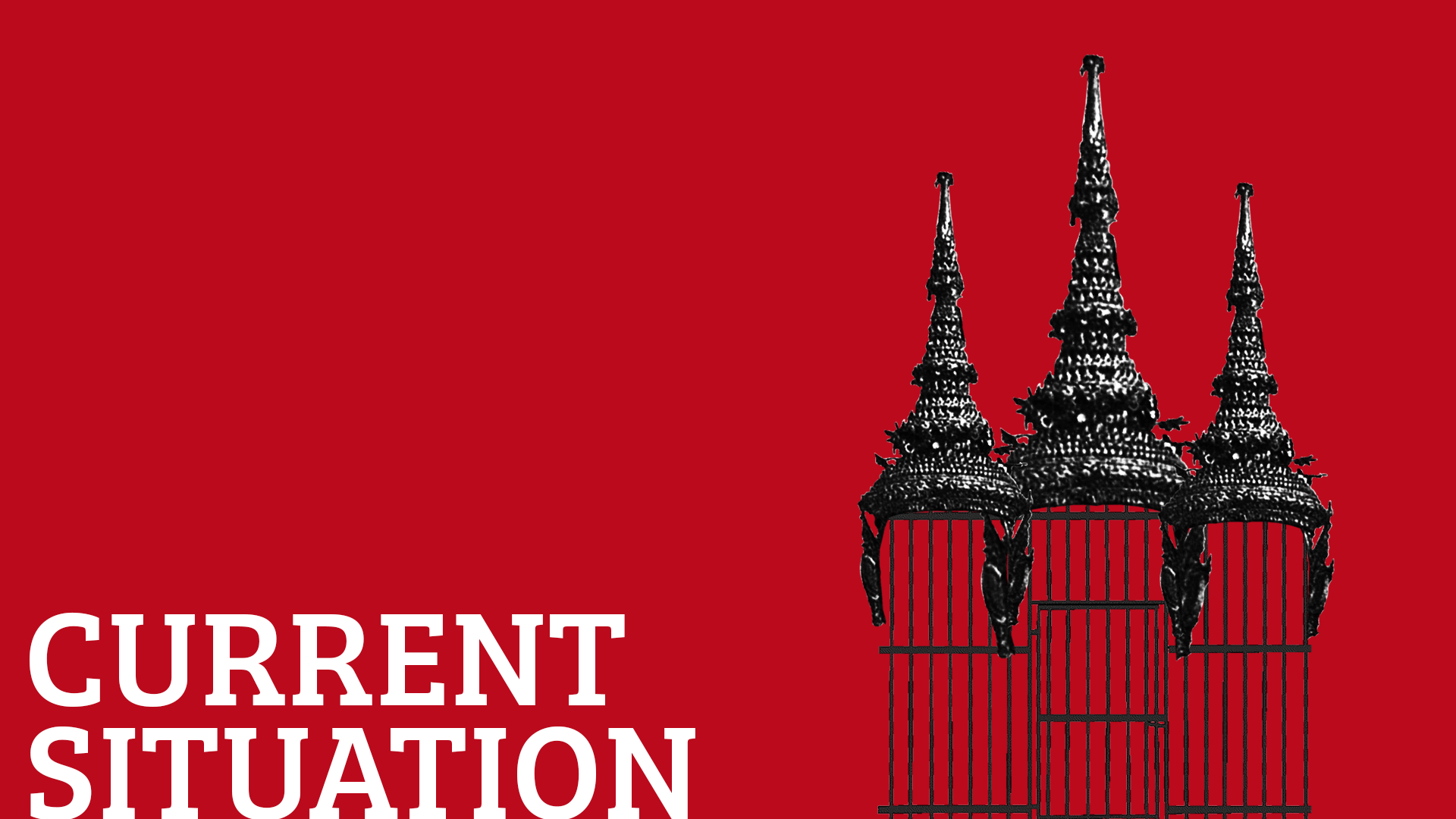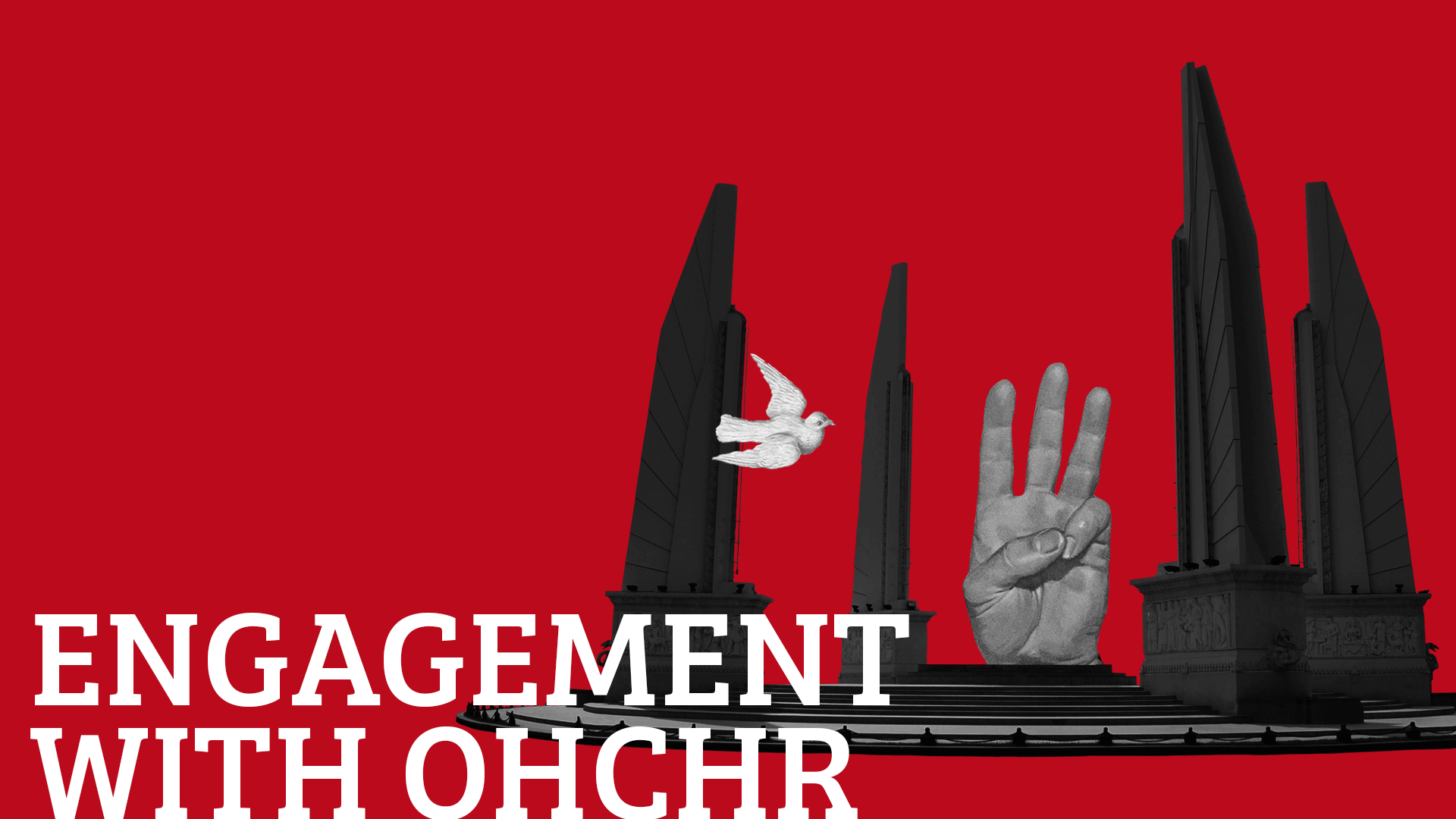
‘Monarchial Symbolism’ Kills! Untouchable Throne
Netiporn's legacy lies not merely in her tragic death but in the questions her activism raised—questions that remain unanswered and increasingly urgent as Thailand struggles to reconcile its democratic aspirations with the reality of monarchial power.
May 19, 2025
One year has passed since the prison walls of Thailand claimed yet another life in service of an untouchable ideology. Netiporn "Bung" Sanesangkhom's death on 14 May 2024, while incarcerated for alleged violations of Section 112—Thailand's lèse-majesté law—marks not merely a personal tragedy but illuminates the machinery of state-sanctioned silencing that continues unabated in modern Thailand. When royal emblems suffocate citizens more effectively than hangman's ropes, has monarchial symbolism become the nation's most perfect assassin? The case of Netiporn represents not an anomaly but rather the most visible manifestation of a centuries-old pattern wherein the Chakri Dynasty's legitimacy is maintained through the systematic elimination of dissenting voices. Her death while awaiting trial for criticizing the monarchy reveals the ultimate weapon in the royal arsenal: the ability to punish without appearing to have blood on one's hands.
The Architecture of Sacred Impunity
The calculated brutality of Thailand's lèse-majesté law lies in its facade of judicial process. Yet this veneer of legality cannot disguise its true function as the modern incarnation of historical suppression techniques. Before the codification of Section 112, the Chakri Dynasty maintained power through more direct means—public executions, disappearances, and torture. Today's approach—deaths in custody attributed to "natural causes" or "suicide"—represents not evolution but refinement. The monarchy has merely outsourced its violence to the bureaucratic apparatus of the state while maintaining plausible deniability. Netiporn's death exemplifies this sophisticated system of oppression wherein the crown remains symbolically "pure" while its mechanisms of control exact the ultimate price from those who question its authority.
The ideological architecture supporting this system relies on what we might term the "sanctified untouchability" of the Thai monarchy—a construct dating back to the reign of King Chulalongkorn (Rama V), who modernized Siam while simultaneously cementing the notion that the monarchy exists above and beyond the realm of legitimate criticism. This paradoxical combination of modernization and feudal authority created the perfect conditions for Thailand's current crisis of expression. Historical analysis reveals that each successive generation of the Chakri Dynasty has recalibrated this balance, sometimes loosening restrictions during periods of stability only to violently reassert control when faced with growing dissent. Netiporn's case emerges at precisely such a moment of reassertion, as younger Thais increasingly question the monarchy's role in contemporary society. Her death serves as a warning—the palace walls may have been replaced by prison cells, but the consequence for transgression remains unchanged.

Netiporn's Corpse as Text
The complicity of Thailand's Department of Corrections in these mechanisms of control cannot be overlooked. Operating under royal decree, the prison system functions not as a corrective institution but as an extension of monarchial power—a space where those who challenge royal authority can be neutralized without the messy international consequences of more visible forms of repression. The strategic opacity of Thailand's prison system—where deaths can be attributed to "health complications" or "pre-existing conditions"—provides perfect cover for what essentially amounts to state-sponsored elimination of political opposition. In this light, Netiporn's death represents not an institutional failure but rather the system functioning exactly as designed: a mechanism for removing threats to the monarchy while maintaining the fiction of a modern justice system.
Cross-cultural analysis reveals that Thailand's monarchial symbolism operates through a unique combination of sacred authority and military power. Unlike European constitutional monarchies that have largely surrendered political authority in exchange for ceremonial relevance, the Thai monarchy has maintained its position as the untouchable center of national identity specifically through its alliance with military forces. The revolving door between military coups and royal endorsements has created a symbiotic relationship that makes criticism of either institution potentially fatal. Netiporn's activism targeted this precise nexus of power, revealing how the symbolic authority of the monarchy provides cover for military control of political institutions. Her death illuminates how this partnership functions: the military provides the physical apparatus of control while the monarchy supplies the ideological justification for suppression.
The philosophical underpinnings of Thailand's monarchial symbolism rest on a carefully cultivated conflation between criticism and treason. Section 112 transforms critical analysis into an act of violence against the state itself, creating a logic whereby speech becomes equivalent to physical attack. This transmutation of expression into treasonous action represents a fundamental perversion of political discourse, whereby questioning power becomes not merely forbidden but conceptually impossible within the system's own logic. Netiporn's activism challenged this conceptual framework by insisting on the right to evaluate power critically—a stance that the Thai state could not tolerate precisely because it threatened not individual holders of power but the entire ideological apparatus supporting the monarchy's untouchability.
Historical precedent reveals that Netiporn's case follows a pattern established during the reign of King Vajiravudh (Rama VI), who systematically employed both traditional punishment and modern legal frameworks to eliminate political opposition. The hanging of rebels in 1912 and the subsequent legal codification of royal inviolability established dual tracks for suppressing dissent—one visible and terrorizing, the other bureaucratic and deniable. The genius of this system lies in its flexibility; when international attention focuses on Thailand's human rights record, suppression shifts to the legal track, giving the appearance of due process while achieving identical results. Netiporn's death while awaiting trial—rather than through public execution—demonstrates the evolution of this dual-track system to meet contemporary demands for the appearance of judicial process.
The collective silence surrounding deaths like Netiporn's reveals how deeply entrenched monarchial symbolism remains in Thai society. Even those who privately question the monarchy's role often self-censor out of fear—not merely of legal consequences but of social ostracism. This culture of enforced reverence creates a nation of unwilling participants in their own subjugation, where citizens become complicit in maintaining power structures that ultimately threaten everyone's security. Netiporn's activism sought to break this cycle of complicity by speaking openly about what many think privately. Her death represents not just the silencing of one voice but a warning against collective awakening—a demonstration that the state possesses both the will and the means to maintain the ideological status quo at any cost.
International responses to cases like Netiporn's reveal the limitations of global human rights frameworks when confronted with deeply embedded cultural narratives about authority and tradition. Western nations often hesitate to apply the same human rights standards to Thailand that they would demand elsewhere, citing cultural differences or strategic partnerships. This selective application of human rights principles enables the continued operation of Thailand's dual system of symbolic reverence and practical suppression. Netiporn's case challenges this international complicity by forcing a simple question: at what point does respect for cultural difference become tacit acceptance of state-sanctioned elimination of political opposition?

Thailand’s Deadly ‘Monarchial Symbolism’
As we mark one year since Netiporn Sanesangkhom's death, we must confront the uncomfortable reality that her demise was not an aberration but rather a predictable consequence of a system designed to eliminate threats to monarchial authority while maintaining plausible deniability. The true power of Thailand's monarchial symbolism lies not in its ability to command respect but in its capacity to eliminate dissent while appearing to remain above the fray. Each death in custody, each decade-long sentence for criticism, reinforces the message that the monarchy remains literally untouchable—beyond not just legal accountability but conceptual questioning. Until this fundamental mechanism is addressed, Netiporn's death will not be the last sacrifice on the altar of Thailand's bloodless crown—a system that kills without appearing to have blood on its hands.
The path forward requires not merely legal reform but a fundamental reconsideration of how monarchial symbolism functions in contemporary Thailand. As younger generations increasingly question the untouchable status of traditional institutions, the pressure on the system will only increase. Netiporn's legacy lies not merely in her tragic death but in the questions her activism raised—questions that remain unanswered and increasingly urgent as Thailand struggles to reconcile its democratic aspirations with the reality of monarchial power. Her name joins a long list of those who have paid the ultimate price for challenging the bloodless crown—a system that maintains its symbolic purity precisely by outsourcing its violence to the machinery of the state.
Prem Singh Gill
Prem Singh Gill is a Visiting Scholar in Universitas Muhammadiyah Yogyakarta, Indonesia, and in Thai Public Universities




